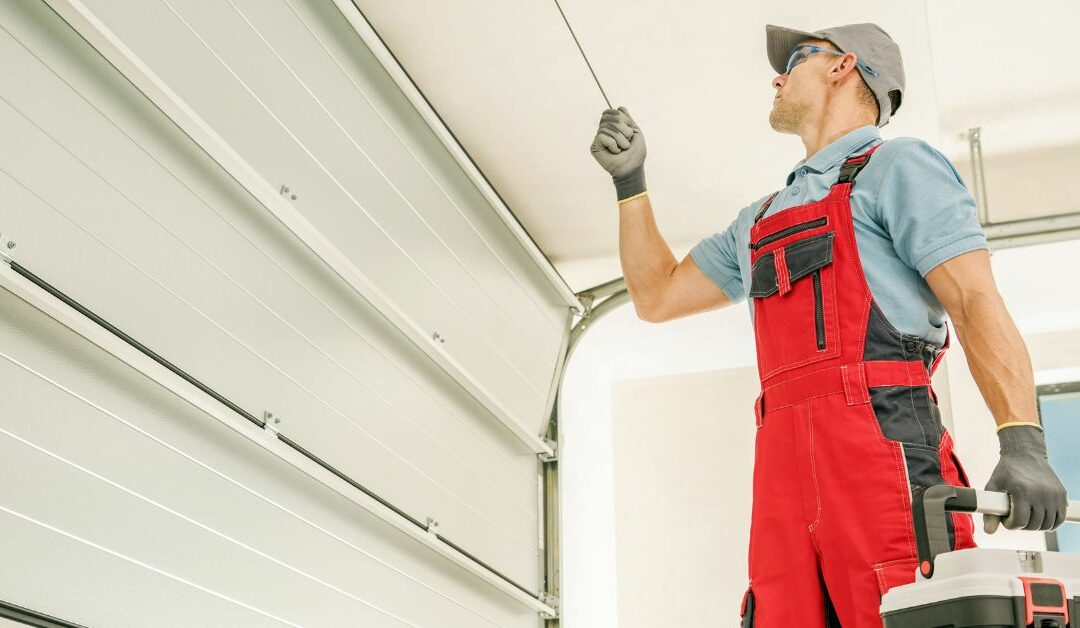As a homeowner, I use my garage door more frequently than the main one. While it offers convenient entry into my home, its complexity makes it prone to malfunctions. I get very frustrated every time my garage door gets stuck. Sometimes, it does so for apparent reasons; other times, the problem is challenging to unravel.
On most occasions, I call a technician to carry out garage door replacement works or fix the minor issues the door could be having. But with time, I’ve realised I need to know the actual causes of my garage door issues. This knowledge has helped me avoid inconveniences when I can’t find a technician.
I discovered the top five reasons a garage door gets stuck and how to fix each of them:
Reason #1: Obstruction in the track
The leading cause of a stuck garage door is an obstruction in the track. Garage doors have rollers that grind along tracks. An obstruction can be due to blockage by small stones, plant debris, misplaced toys, and dirt.
Obstruction may also result from misalignment of the track, which creates a gap between the rail and the rollers. In severe cases, the roller gets off the track. Tracks can also warp or bend with time if the misalignment persists. Old tracks are more prone to misalignment.
Fixing Obstructed Tracks
I examine my garage door tracks, rollers and hinges to detect blockages and remove any debris lodged in them. If the cause of obstruction is a warp or misalignment, I adjust the tracks to fix the door and prevent further damage. I start by loosening the screws that connect the rail to the door frame and repositioning the channels using a rubber mallet.
I confirm the tracks are straight before fastening the screws back. If they’re rubbing or gapping, I move them on track. I usually unscrew the top track and then move it until I have a half centimetre gap between the molding and the door. I then tighten the screws back once I’m done.
Reason #2: Broken springs
A garage door that has broken springs cannot open or close well. Garage door springs may be horizontal or vertical on either side. Horizontal springs are known as torsion springs. These springs hold the weight of a garage door. The opener cannot raise the door without functional torsion springs.
Some common signs of broken torsion springs include opener strains when raising the door or movement that doesn’t move the door. I look for gaps in-between to find out whether my torsion springs have breakages. Broken vertical springs, also called extension springs, will have pieces hanging on the garage door.
Fixing Broken Springs
The only way to replace broken springs is to hire an experienced professional. I avoid replacing them on my own because the process can be dangerous.
Reason #3: Faulty opener or sensors
My garage door can fail close when it has a faulty opener or misaligned sensors. Garage doors come with sensors called photo eyes on either side to stop them when something gets in their way. An invisible beam connects the sensors.
When an object interrupts the beam, the system breaks the circuit after getting a signal from the sensor. Misalignment and dirt can interrupt the laser beam, breaking the communication between the two sensors in the garage door. This interruption breaks the circuit, causing the door to malfunction. Dirty or malfunctioned sensors may also sense blockage where none exists.
Fixing Faulty Openers or Sensors
Whenever I have a faulty sensor, I clean the surface with a soft cloth to remove any dirt causing a blockage.
Reason #4: Misaligned or damaged rollers
Garage doors get stuck when the rollers are either damaged or misaligned. The doors have rollers that wheel along a metal shaft to open or close the door. Worn-out rollers can bind against each other and the track, making movement impossible. Additionally, dirt build-up and debris can block the door tracks and make it difficult for the door to close or open. Rollers can also get misaligned and cause problems.
Friction and rubbing noises can indicate roller problems when opening or closing garage doors. Whenever I suspect my door rollers have issues, I check for breakages and blockages on the roller and rail gaps. I also move the door up and down to see whether the rollers bind.
Applying force on a door with these issues can bend the tracks, push the rollers out completely and damage the system.
Fixing Misaligned or Damaged Rollers
Cleaning the track with a piece of cloth removes dirt and blockages that may hinder the smooth opening of a garage door. For a misaligned roller, I use a hammer to tap them gently. This action helps to straighten them into shape. I get a professional to repair or replace damaged rollers.
Reason #5: Worn or damaged cables
Automatic garage doors come with aluminium or steel cables on either side. These cables raise
and lower the door by transferring energy from the springs to the door. Garage doors remain stuck when the cables break. While the garage door cables may be robust, they wear out and lose tension, snap or fray over time. Handling cables without proper training is extremely risky.
Fixing Worn or Damaged Cables
Whenever I have worn or damaged cables, I get a replacement. It’s advisable to call a technician to fix the problem if they’re broken or loose.
Final Thoughts
Garage doors are bound to get stuck due to their complexity. A malfunctioning garage door can inconvenience everyone in a household. It can leave your garage prone to intruders or fail you just when you need to drive your vehicle in.
A garage door can get stuck for various reasons. But the main reasons are obstructed tracks, broken springs, faulty sensors, misaligned rollers and damaged cables. While it’s possible to fix some of these problems with little or no training, the best way to resolve issues like damaged cables and broken springs is to hire a professional.

